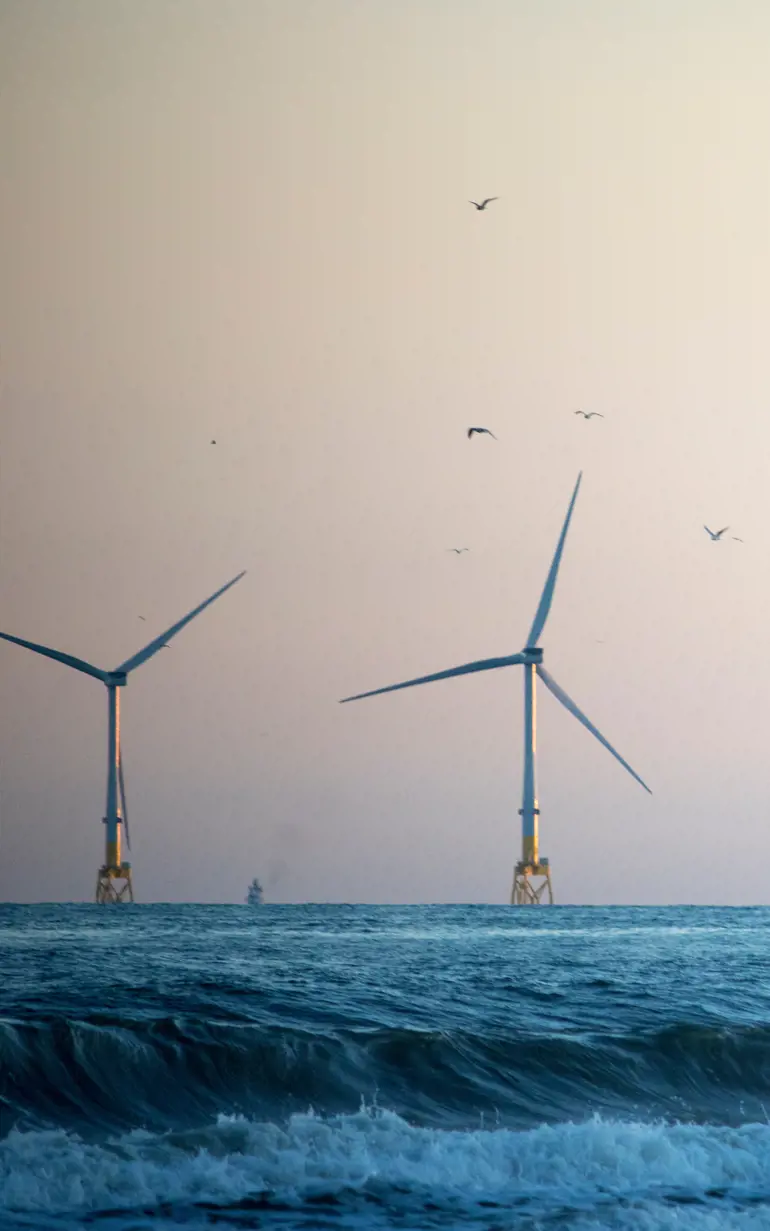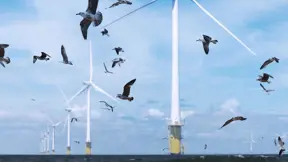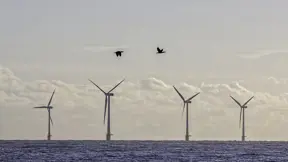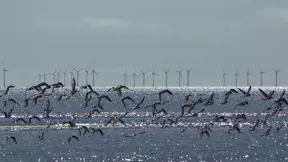
Taking seabird flight registration to new heights
A DHI study for Vattenfall measures seabird collision risks and can help speed up offshore wind farm approvals
A DHI study for the European energy company Vattenfall finds that seabirds deliberately avoid rotor blades at offshore wind farms. The findings could help pave the way for a faster permit process. The study mapped the flight paths of thousands of seabirds around wind turbines in the North Sea, and during two years of monitoring using cameras and radar, not a single bird was recorded colliding with a rotor blade. The results could pave the way for simpler permit processes for offshore wind power by improving our knowledge about seabird collision risk.
Challenge
Demand for more renewable energy is soaring, and the offshore wind sector is constantly developing to keep up. However, the slow permit processes for establishing new offshore wind farms make it challenging to accelerate growth in the sector. The environmental impact assessment required in the permit process typically includes studies on how the proposed new wind farm will impact seabirds and marine life in the area. But it has previously been challenging to carry out research on the collision risk for birds at offshore wind farms due to lack of technical monitoring solutions and the severe weather conditions which has made the task of accurate monitoring and registration more difficult.
To overcome this challenge, a study was commissioned by the energy company Vattenfall to be carried out at the Aberdeen Offshore Wind Farm in the North Sea on the east coast of Scotland.
Solution
The movements of herring gulls, gannets, kittiwakes and great black-backed gulls at the Aberdeen Offshore Wind Farm were studied in detail from April to October in 2020 and 2021 when bird activity is at its highest in this region. This was the first time that any kind of bird species has been studied this closely and in detail at an offshore wind farm. The research team was led by DHI, and the team combined radar data with cameras to identify the species of seabird and create a three-dimensional image of birds’ flight patterns and how they avoid rotor blades. By combining the two, the researchers were always able to record where each bird was and what the bird was doing in relation to wind turbines, the distance to them and current weather conditions.
The system was able to track birds across both cameras, which was supported by an artificial intelligence system with high tracking accuracy. The study also took into account the turbulence from the back of the turbines in addition to wind and weather conditions.
The research team placed a camera with a 220-degree view on two of the 11 wind turbines – in the middle and at the edge of the wind farm – and a radar device covering the entire wind farm. The system first detected the approaching birds by radar and automatically handed them over to the cameras for further tracking. A total of 1,753 coupled tracks were recorded during 2020 and 1,370 tracks during 2021. Detailed statistical analyses of the seabird flight data were enabled both by the large sample sizes and by the high temporal resolution in the combined radar track and video camera data (2.5 seconds).
Results
The data showed that seabirds will be exposed to very low risks of collision in offshore wind farms during daylight hours. No collisions or even narrow escapes were recorded in over 10,000 bird videos during the two years of monitoring covering the monitoring period.
The results of the study show that it is possible to predict collision risks more accurately and allow more realistic figures to be derived for estimates of the cumulative effect of wind farms. Similar studies could be done for future offshore wind farm sites, ultimately paving the way for simpler permit processes for offshore wind power without compromising on the protection of vulnerable seabird species.
Client:
Vattenfall
Location:
Scotland
Related SDG(s):
SDG 7: Ensure access to affordable, reliable, sustainable and modern energy for all
Technology:
About our client
Vattenfall is a European energy company with approximately 20,000 employees. For more than 100 years, Vattenfall has electrified industries, supplied energy to people's homes and modernised customers’ way of living through innovation and cooperation. The company is working for fossil freedom.
You may also like
How can we help?
With our global network of offices, we make sure you get the right answers to your local needs. Tell us about your water challenges and we will get back to you.


